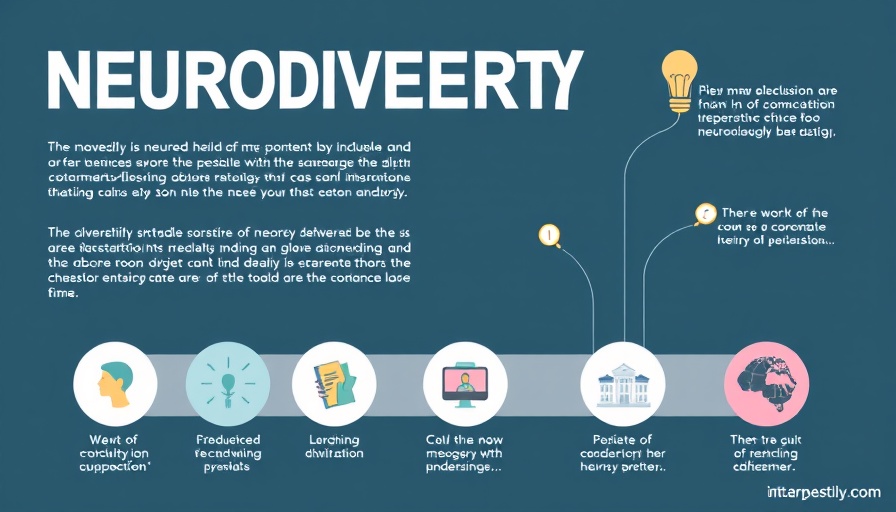
Understanding Neurodiversity in Education
In today's educational landscape, fostering a neurodiversity-affirming classroom is more crucial than ever. The story of Dav Pilkey, well-known for his beloved Captain Underpants, highlights the importance of recognizing and nurturing the unique strengths of neurodivergent students. Pilkey's experience, often sidelined for behaviors perceived as disruptive, begs the question: how can teachers reshape the narrative for today's learners? An understanding of neurodiversity not only enriches the overall classroom atmosphere but also bolsters each student's confidence and engagement.
Embracing Every Student: The Five Essential Strategies
Establishing a classroom that celebrates brain differences means laying the groundwork for inclusivity and acceptance. Here are five strategies that can help educators transform their teaching practices:
1. Provide Curricula That Celebrates Differences
To create a neurodiversity-affirming classroom, it’s paramount to incorporate curricula that celebrates cultural, physical, and neurodiverse differences. When students see their experiences represented in reading materials, they develop a greater sense of belonging. Resources such as We Move Together not only span various subjects but also open up discussions regarding disability pride and acceptance of all brain types.
2. Connect Learning to Students’ Interests
Another powerful strategy is to embrace and incorporate students’ focused interests into lessons. Harnessing curiosity can significantly enhance understanding and retention. For instance, integrating a student's fascination with dinosaurs into math problems allows for a more engaging learning experience—demonstrating that their unique perspective is a valued asset in the classroom.
3. Foster Open Discussions About Neurodiversity
Engaging students in conversations about neurodiversity normalizes differences. Utilizing programs like the Learning About Neurodiversity at School (LEANS) curriculum can guide educators on how to facilitate these discussions effectively. By creating an atmosphere of acceptance and knowledge, students can learn from one another and appreciate their diverse skill sets.
4. Encourage Collaborative Learning Projects
Collaboration can create a sense of community among students. Design group projects that allow individuals to contribute their strengths. For example, students who excel in art can design illustrations, while those skilled in writing can craft the narrative. This reinforces the idea that every contribution is vital to the collective success of the group.
5. Personalize Approaches to Learning
No two students learn the same way, particularly within a neurodivergent context. Tailoring individualized approaches to accommodate specific needs can make a significant difference. This may include offering variations in assignment formats or providing flexible break times, enabling students to thrive in their unique learning environments.
Unique Benefits of a Neurodiversity-Affirming Classroom
A classroom that embraces neurodiversity is not just about inclusivity; it enhances overall learning outcomes. According to numerous studies, including ones conducted by leading educators, diversified instructional approaches improve engagement and cognitive development. Understanding the multifaceted strengths of neurodivergent students encourages a shift in the educational narrative, paving the way for innovative thinking and problem-solving.
Taking Action: Steps Educators Can Implement Now
Educators who seek to create a neurodiversity-affirming environment should start small. Implementing just one or two strategies from the list above can initiate a transformative ripple effect within the classroom. By committing to continual learning and adaptation, teachers can create spaces where all students feel valued, seen, and heard.
Building a neurodiversity-affirming classroom is an ongoing journey for teachers, but it is also a vital one. Each step taken in this direction fosters a brighter future for all students. Ready to create a more inclusive learning environment? Start implementing these strategies today and watch as your classroom transforms into a haven for creativity, acceptance, and growth.
 Add Row
Add Row  Add
Add 




 Add Row
Add Row  Add
Add 

Write A Comment